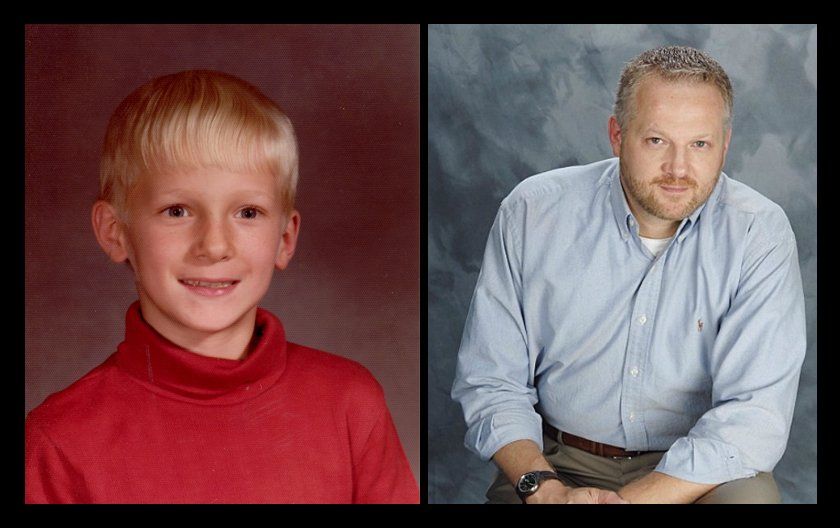
About the Owner
Brett Brodersen is a fifth-generation Midwesterner who grew up in Iowa and Nebraska. He holds a Bachelor of Arts degree from Briar Cliff University as well as various professional and academic distinctions. His undergraduate studies included extensive work in the field of mass communications relating to layout and design, television, radio, broadcasting, video editing and photography. He has been directly involved in digital restoration since 1997 and currently lives with his wife in Lincoln, Nebraska.
A Word on Preservation, or "Why Time Is NOT On Your Side"
by Brett Brodersen
If I could communicate one thing to everyone regarding the protection of their family histories, I would simply say that it is important to recognize that time is NOT on your side when it comes to protecting your pictures and films. The time lost in waiting to protect and save the items from the past is always, to some degree, lethal for those same items.
And no, it is NOT your fault. The simple truth is that any item that is not already in a digital format is in fact destroying itself simply by virtue of the materials used to originally create it. If you think about it, it makes perfectly logical sense: Old pictures and films are made of organic materials, so it's no real surprise that paper products, chemicals, color dyes, plastics, etc, are all self-destructive when given enough time, even under the best storage conditions.
Pictures will fade, negatives will warp and distort and begin to smell like vinegar, and home movie films become brittle and break. Videotapes stretch, break, fade from repeated playing (part , and they can become moldy in stored in a moisture-rich environment, such as an attic or basement. They can develop tracking lines in the pictures, and have an average lifespan of only seven years, and that means that they have been outdated for at least that long with the advent of DVDs in the 1990s and Blu-Ray discs in the mid-2000s.
It's an unfair situation that you find yourself in, that your oldest memories are on the materials that are also arguably the most fragile, but if they have any value to you or your family at all, then the time to consider correcting your situation is now. You need to have them recreated digitally, and then protect those new digital copies for the years and generations that will follow.
With a simple disc or e-mail attachment you can share your image with family and friends, where they might pass it on as well, or make prints for their own family albums. This not only "shares the wealth" but with every copy shared with family or friends, you minimize the risk of a total loss due to some unforeseeable circumstance such as fire or flood. Every year untold numbers of people die rushing back into a burning home to attempt to make a last-minute grab of the family photo album. When the news media shows the devastation of a family returning to the remains of a flood-ravaged home, they never spotlight the loss of a dining room table or the car in the driveway; rather, it comes down to the family pictures that are found in a soggy and ruined condition in the rubble. The reason is simple: In the end, these are the things that matter the most in our hearts, the ones that simple insurance money cannot replace. FSA Digital Services exists to help you safeguard against these sometimes-unavoidable, but easily-predictable losses. We are here to help.
First and foremost in your consideration for digital preservation is to understand clearly that we do NOT alter your original items in any way: All we do is make a high-quality scan or picture of your item, and then the item is returned to you in its original condition. The process of doing so is non-destructive. Once that step is done, all of our digital restoration is done on the computer utilizing the digital copy.
In most cases, digital restoration can even offer improvements over the original image quality (color, tone, contrast, etc) and we can perform as many variations of repair as you can think of, while retaining a perfect original image of your item.
The benefits of restored digital images are manifest: Now near-endless possibilities exist to offer digital copies to those who are interested without giving up either your digital copy or the physical original from which your restored image was created. You can pack up that original picture in a safe place and display a cleaner, larger copy on the wall in the living room and never worry about the original being damaged or destroyed by daily exposure to the caustic radiation of sunlight.
And, of course, once something is digitized we/you can make copies and try other image changes with no worry about permanently changing your digital "original." Suppose you perfectly restore that picture, but now you want to try it with a different color tint to it? Or do just a close-up of their faces for your daughter's family tree project at her school? Or hand-color a picture that was taken in black-and-white so you can see what that might have looked like? All this and more are now possible. It is no exaggeration to say that we have options for preservation, restoration and creativity that previous generations would have considered impossible.
In this new digital age, the only limits are your imagination.
I look forward to helping you, and good luck in your endeavors.
- Brett
- Brett
